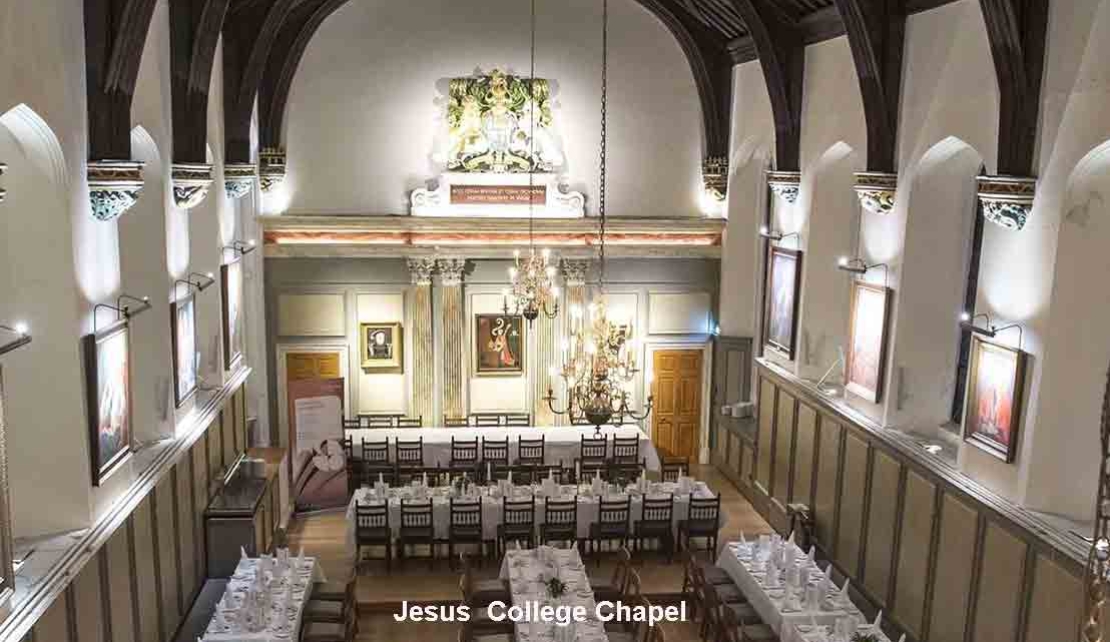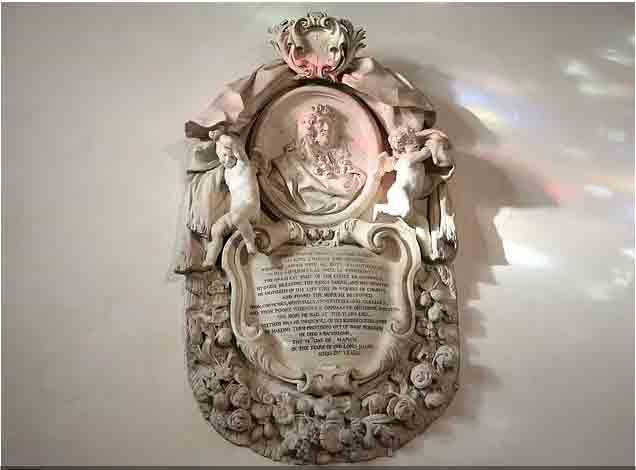BRITAIN | Church Court Regarding English Slave Trade Investor Memorial Begins Feb. 2

MONTEGO BAY, Jamaica, January 31, 2022 - The Diocese of Ely will meet as an ecclesiastical court on Wednesday February 2, to deliberate whether a memorial located in the Jesus college Chapel of University of Cambridge, in honour of its most significant benefactor, Tobias Rustat, should be removed as a result of his links to the infamous Transatlantic Slave Trade.

The ancient Chapel of Jesus College is a major landmark which dates back to back to 1157. It is said to be the oldest Cambridge University building still in use and boasts “stained glass windows by Victorian designer William Morris, several priceless sculptures and oil paintings and no fewer than three vast organs, the most famous of which is adorned with golden panels decorated by Pugin.”
Rustat, who gave generously to Jesus College, commissioned master sculptor Grinling Gibbons to create the prominently displayed memorial in Jesus College's chapel, beneath which he was buried following his death in 1694.
In 1667 Rustat, a philanthropist and courtier to Charles II, gave the Cambridge University Library its first endowment of £1,000 - equivalent to approximately £240,000 in today's money - to buy “the choicest and most useful” books.
In 1671 Rustat (1608-1694), donated £2,000 - equivalent to approximately £480,000 in today's money- to Jesus College for scholarships for orphan sons of Anglican clergymen. Rustat dedications in Cambridge included a statue on the library building, and of course, the funeral memorial inside the Grade 1 listed chapel at Jesus College where Rustat lies at rest – and Rustat Road near the rail station.
Jesus College, is seeking to relocate the memorial to Rustat who invested with the Royal African Company, which according to historian William Pettigrew, 'shipped more enslaved African women, men and children to the Americas than any other single institution during the entire period of the transatlantic slave trade'.
100%Master of Jesus College and the first female head of an Oxbridge college in its 500 year old history, Barbadian Sonita Alleyne, said the chapel should offer a welcoming space accessible to every member of our community . . . This is the right solution for our college.’

Alleyne said the college's proposal to relocate the monument to an educational exhibition space was "part of a process of critical self-reflection on the long-term legacies of enslavement and colonial violence".
A college spokesperson noted that : "It comes down to whether it's appropriate for the celebratory monument to Rustat to be in a place of worship and reflection, our chapel, which is at the heart of our diverse community.
"The college is not seeking to cancel Rustat or erase him from the record - it is applying to have his memorial moved from a place of worship to a more suitable - but still prominent - place in the college.
He said the memorial was "an obstacle to some members of our community participating" in college events held in the chapel.
Stephen Hemsted and his three brothers, Rustat's tenth great nephews, are arguing that the Company was not the source of money he gave to the institution.

They maintain that Rustat made just 1.3% of his wealth as a result of his investments in the Royal African Company,RAC, and that he gave away as a philanthropist towards the end of his life. Rustat's name appears on the charter for RAC and he donated £400 into the company - the equivalent of almost £100,000 today.
Also opposing the removal of the monument is a group of 65 former students calling themselves the Rustat Memorial Group. They have lodged a formal objection to the proposed relocation and will be represented at the hearing by a leading ecclesiastical barrister named Justin Gau.
The legal arguments may revolve around today’s ethical standards versus that which obtained in the 16th and 17th century when European nations, backed by the power of the Crown and the Church, plundered the nations of Africa and introduced chattel slavery of the inhabitants to the world.
They transported them to sugar, cattle and cotton plantations from the Caribbean to the Americas, the profits from which became the basis of wealthy economies in BritainEurope and the Americas.
This may become a test case for the Church of England, which last May instructed the nation’s 12,500 parishes and 42 cathedrals to consider the removal, relocation or alteration of plaques or monuments connected to the slave trade.
Archbishop of Canterbury Justin Welby says that ‘some [monuments] will have to come down, some names will have to change’.
According to one publication, “the fate of Rustat’s memorial, whose relocation is opposed by English Heritage on conservation grounds, may therefore establish an important precedent.”
-30-

 En
En  Ar
Ar